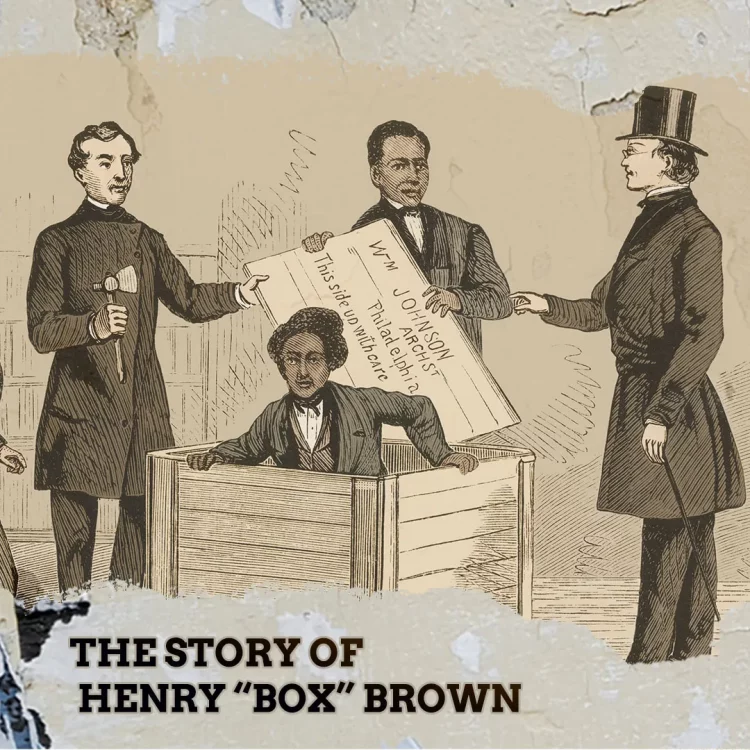The Incredible Henry ‘Box’ Brown: This Black Man Mailed Himself To Pennsylvania To Escape Slavery
Share
Explore Our Galleries
Breaking News!
Today's news and culture by Black and other reporters in the Black and mainstream media.
Ways to Support ABHM?
By Bilal G. Morris, NewsOne

There once was a Black man who, like so many others in the Antebellum south, was trapped under the oppressive thumb of slavery. But one day a magic trick and a box would change his life forever.
Henry Brown was born a slave sometime around 1815, in Louisa County, Virginia. As a teenager, Brown’s slave owner became ill and died. Brown then was sold to a slaver in Richmond where he was forced to work at a tobacco factory. Although his life was in complete bondage, he was permitted to take a wife.
[…]
In 1836 Henry Brown married Nancy and they had three beautiful children. Nancy and the children were then sold to another slave owner who had his own malicious ideas about how to torture Brown and his family.
Using Brown’s family as pawns, Nancy’s new slave master began blackmailing Brown into renting a house for Nancy and the children. If Brown missed payments his family would be sold away. Brown pushed and pushed to continue to make these payments, but eventually, he could no longer meet the slaveholders’ demands and in 1848, his wife and children were sold to a plantation in North Carolina. Brown’s wife was also pregnant with their fourth child when she was sold away. The move almost destroyed Henry Brown. His family meant everything to him and for them to be ripped away from him like that was devastating.
But Brown was a resilient and creative man. He channeled his sadness and anger into an idea that would not only bring him freedom, but it would also bring him fame and fortune. With the help of a Black freeman and a sympathetic white shoemaker, Brown concocted a plan to stuff himself in a box, pretend to be dry goods, and mail himself to the free city of Philadelphia. The idea was insane, but Brown’s freedom meant more than his sanity. With the help of his co-conspirators, Brown commissioned the creation of a wooden rectangular box about three by two feet wide and two and a half feet high, with three small holes for air.
On March 29, 1849, Brown stuffed himself into the tiny box with just a small flask of water and an awl to punch more holes in the box if he needed more air. Brown was then nailed into the box marked, “This Side Up With Care,” and the box was taken to the post office to be shipped.
Many attempted to escape slavery, and some succeeded thanks in part to efforts from people such as Harriet Tubman.
Find Black history articles here.











Comments Are Welcome
Note: We moderate submissions in order to create a space for meaningful dialogue, a space where museum visitors – adults and youth –– can exchange informed, thoughtful, and relevant comments that add value to our exhibits.
Racial slurs, personal attacks, obscenity, profanity, and SHOUTING do not meet the above standard. Such comments are posted in the exhibit Hateful Speech. Commercial promotions, impersonations, and incoherent comments likewise fail to meet our goals, so will not be posted. Submissions longer than 120 words will be shortened.
See our full Comments Policy here.